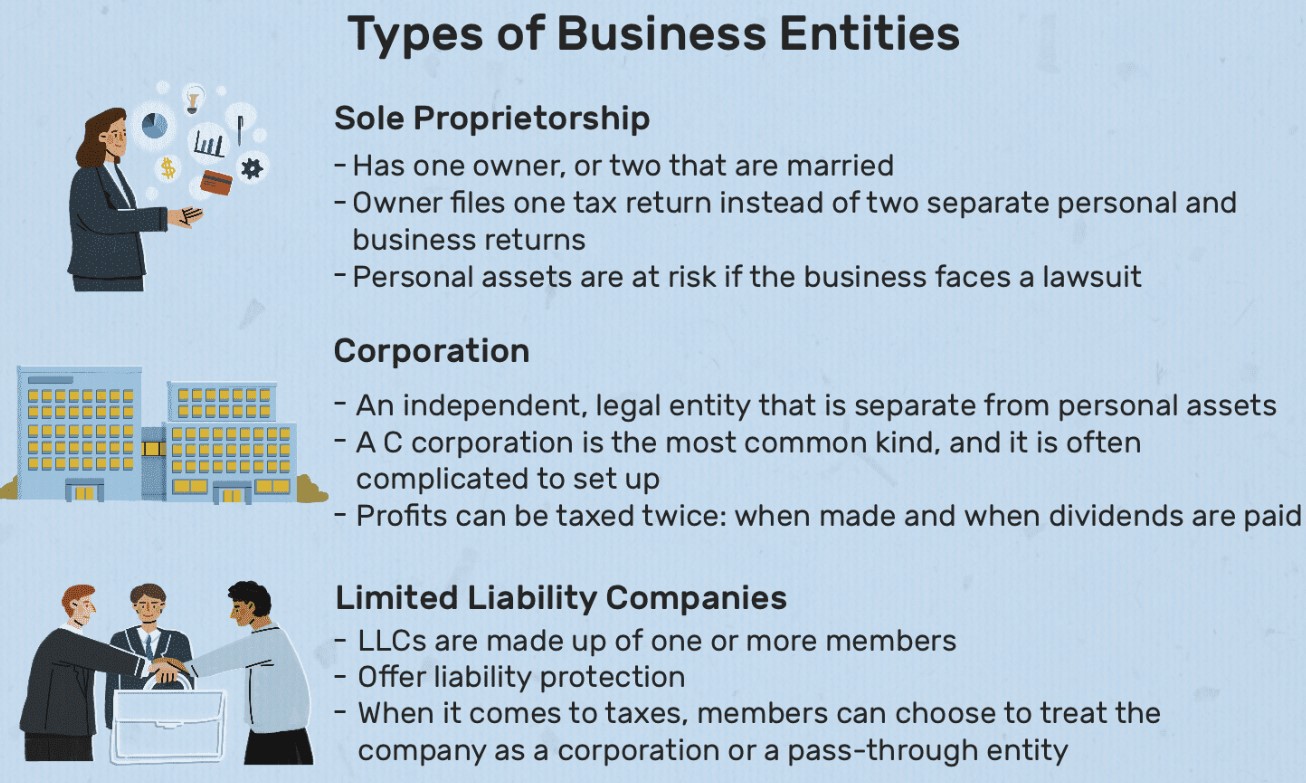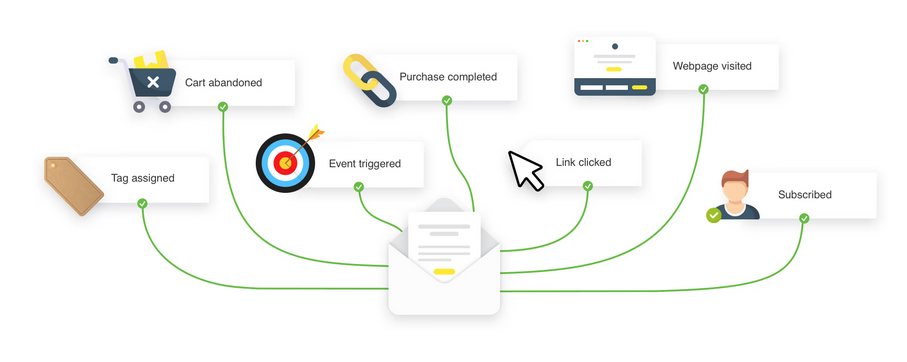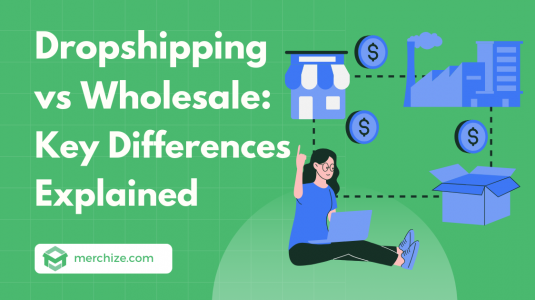Contents
Greeting cards are a popular merch opportunity. In a digital world, people crave tangible connections that cards provide. The handmade card market is wide open for designers to launch boutique brands. This guide covers how to start a greeting card business from design to production to sales. We’ll share tips on creating compelling cards, partnering with printers, packaging, pricing, marketing, and more. Whether it’s holidays, birthdays, or just thinking of you – let’s explore how to start a successful greeting card line.
Step 1: Choose your niche market
While greeting cards may have universal appeal, thriving in this bustling market requires more than a broad focus; you need a niche. A niche in this context refers to a specialized segment of the market that your cards will specifically cater to. Could be anything from funny birthday cards, eco-friendly holiday cards, or some super fancy wedding invites.
Choosing a niche market services a dual purpose. It allows you to fine-tune your craft and, at the same time, build a loyal customer base that identifies with your unique offerings. Your niche could be dictated by your passion or a noticeable gap in the market. Perhaps you’re tired of overly sentimental cards and want to create ones that are sweet yet realistic, or maybe your passion lies in supporting emerging artists by featuring their artwork on your cards.
Choosing your niche isn’t just about what personal like; it must be underpinned by diligent market research. This ensures that there’s a demand for your unique offering. Conducting a market analysis can provide insights into your competition, highlight openings in the industry, and reveal how similar businesses operate. This’ll help you figure out how to make your business shine where others might be struggling.
How do you do that? You could check out platforms like Amazon, Etsy, or eBay to see what’s hot. Google Trends can show you what’s in in your chosen niche, and tools like Ahrefs or Semrush can help you figure out what people are searching for related to your niche.
Classic cards like “Thank you," “Birthday," and “Wedding" can be the backbone of what you’re selling, but don’t forget about seasonal stuff like Christmas, New Year, and Mother’s Day – these can really boost your bottom line.
Just remember, the secret to a kick-ass greeting card biz is nailing your niche before branching out. By sticking to a specific path, you’ll not only build a strong brand identity but also perfect your production process.
Step 2: Do some market research
Getting to know your potential card-buyers and what’s hot in the industry is key to finding your sweet spot in the greeting card biz. You gotta ask yourself: Who’s likely to buy my cards? How many are out there? What are their interests, attitudes, and values?
By splitting your customers into different groups based on these things, you can whip up custom cards that hit the spot for each group. There’s heaps of info out there on the internet that you can use, like social media, online shopping sites, blogs, chat rooms, and product reviews.
Here are a few tricks to nailing your market research:
- Identify Industry Trends and Review Customer Feedback: Look for cards that are kinda like what you want to sell and see what people are saying about them. The folks leaving reviews could be your customers one day.
- Perform Competitor Analysis: Find out who you’re up competition. What are they selling? Who’s buying their product? What are their needs, and what’s bugging them? Have a squiz at your rivals’ social media to see where and what they’re posting, and how often. Finding what they’re not giving their customers is a chance for you to step in and win those customers over.
- Survey Your Network: Your mates could be your customers. Decide what you want to find out, pick a tool like SurveyMonkey, Google Forms, or Crowdsignal, and share the survey on your social media.
- Make Up Buyer Profiles: A buyer profile is like an imaginary typical customer. For instance, “Home-business Hannah" or “Art-fan Alex" could be different parts of your market. Having these profiles in mind can help you make better design choices and stay ahead of the game.
On top of these tricks, take a stroll around physical card shops and gift stores, and see what they’ve got. Try to spot what’s missing or how you could do better. Online can give you even more card ideas. Keep in mind, having a one-of-a-kind product is only half the battle; you’ve also gotta market it well.
Finding a gap in the card industry that isn’t already filled can set your business up for the win. It’s all about bringing something new to the table, filling a hole in the market, and doing it better than anyone else.
Step 3: Write a business plan
Putting together a solid game plan is super important for figuring out how to kick off a greeting card business. Whether you’re planning to run your biz from your living room or on a bigger scale, a game plan helps keep your biz on track, lays out your plans to grow, and shows off how cool your brand is to folks who might want to invest. Even if you’ve already initiated your business, it’s never too late to draft a business plan. Checking out and updating your business plan from time to time can help you stay on point with your goals.
Creating a business plan might seem a bit scary at first, but using a game plan template can make it easier. A typical game plan should cover the following elements:
- Quick Overview: This super important part of your business plan gives a short-and-sweet rundown of your biz, outlining what you do, who you’re aiming to sell to, and how you plan to reach your goals.
- Company Description: This should quickly answer two questions: who you are and what you’re planning to do.
- Market Analysis: This part should go over a quick look at the greeting card industry, your guesses on how big the market might be for your stuff, a look at your competition, and your biz forecasts.
- Team and Organization: This is a quick look at your biz setup and crew, showing how it’s run, who’s in the team, and what they do.
- Products: In this part, give a detailed rundown of your products, compare them with similar stuff out there, and explain your pricing strategy.
- Customer Groups: This rundown should cover details about your customers based on things like age, gender, whether they’re married or not, values, wants, interests, what they do, habits, hobbies, or where they live.
- Marketing Plan: This strategic plan should describe how you’re going to arrange, carry out, and check on your marketing efforts.
- Logistics and Operational Plan: With a print-on-demand biz model like Merchize, you don’t need to sweat about stock or storage space. When you make a sale, the print-on-demand company takes care of everything – printing, managing stock, and shipping.
- Money Plan: Depending on what you’re aiming for, the money plan can include a profit and loss statement, a balance sheet, and a cash flow statement.
Step 4: Establish Your Business as a Legal Entity
One of the biggest moves when kicking off any business is making sure you’ve got all the right paperwork, like licenses, permits, and insurance. If you don’t, you might end up with fines or legal hassles that could put the brakes on your greeting card gig. What you need is gonna depend on where you’re at, how your business is set up, and what kind of business you’re running. You might even need to get business licenses on a national, state, and local level.
If you’re thinking of hiring folks, you’ve gotta get an Employer Identification Number (EIN), which you need for taxes. Even if you don’t have staff, an EIN can still come in handy for other things.
Your business insurance options should also be explored. If you’ve got staff, you’re gonna need things like workers comp, unemployment, and maybe even disability insurance. If you’re running things from home without staff, think about getting commercial property insurance or general liability insurance to cover both you and your inventory.
Here’s the usual run-down for making your business official:
- Picking Your Biz Structure: Usual ones are like running a one-man show (sole proprietorship), teaming up (partnership), going big (corporation), setting up an LLC, or starting an LLP. Each comes with its own cash needed, potential hiccups, and tax stuff. Once you’ve picked a structure, get the right paperwork in with the state.
- Choosing a Cool Business Name: Your biz name should be all about your brand, click with your crowd, and easy to Google. Make sure it’s different so folks don’t mix you up with someone else. Once you’ve picked a name, register it to protect your business.
- Getting Your Business Registered: What you need to do can vary depending on your type of biz and where you’re set up. Check with local rules to see what they need from you.
- Getting an Employer Identification Number (EIN): The EIN’s like your biz’s Social Security number for tax stuff. You can get your EIN from the IRS website.
- Registering for Taxes and Getting Your Business License and Permits: Depending on where your biz is, you might need to cough up sales tax and other legal and tax stuff. It’s a good shout to talk to a tax pro to make sure you’re clear on what you owe.
The U.S. Small Business Administration, your local chamber of commerce, and legal pros can be handy for getting through all this. Don’t forget, every country, state, and city plays by different rules, so it’s really important to talk to a legal pro who can guide you based on what you need for your biz.
Step 5: Design and Create Greeting Cards
Once your business is structured and ready to rock, now it’s time to design and make your own greeting cards. With a platform like Merchize, it’s a piece of cake. Here’s how you can do it:
Register for a Free Account
First thing you gotta do is sign up for an account on a site that offers print-on-demand services, like Merchize. It usually takes just a few minutes.
Choose a Greeting Card Template from the Product Catalog
The platform’s gonna have loads of print on demand greeting card templates perfect for any occasion. Just flick through them until you find one that fits your style. Remember, most print-on-demand platforms do not require an upfront investment. You only fork out for a greeting card when a customer buys one.
Customize Your Greeting Card
Once you’ve selected a template, use the platform’s mockup generator to add your unique design elements. You can incorporate text, illustrations, photographs, or any other graphic elements you prefer. The mockup generator will typically be user-friendly, allowing you to create an attractive design with just a few clicks.
After you’ve picked out a template, use the platform’s mockup generator to sprinkle in your own flair. You can add words, drawings, pictures, or whatever other graphic bits you like. The mockup generator’s super easy to use, letting you make a snazzy design in just a few clicks.
Once you’re happy with your greeting card design, the print-on-demand service does the rest – from printing and wrapping to shipping straight to your customer’s door. The trick is to make sure your design clicks with your target audience and stands out from the crowd. It’s super important to take your time getting this step right, since your designs are gonna be the heart and soul of your handmade greeting card business.
Print-On-Demand – the Secret Sauce for Card Success
Looking to start dishing out killer greeting cards without major upfront risks or costs? Partnering with a print-on-demand (POD) service is the secret sauce for card slinging success.
POD allows you to upload card designs to an online catalog to sell instantly. When an order comes in, they print, package and ship cards directly to customers for you – no need to hold inventory!
This saves huge on wasted printing, storage fees, and eliminates guessing how many designs will sell. With POD, you can test more card designs and personalize for customers without worrying about being stuck with unsold stock. Cha-ching!
Merchize is a top POD platform for cards and other merch. We handle quick turnaround printing, packaging, and shipping worldwide – you just watch the sales roll in.
Merchize also provides designer-friendly layout templates, quality cardstock options, easy order tracking, and integration with ecommerce platforms like Shopify.
So skip the financial risk and headaches of mass production. Focus on killer designs while Merchize handles card production and fulfillment. That’s how you play the greeting card game like a boss!
Step 6: Set the Right Price for Max Profits
Greeting cards may be small, but pricing them right is critical for connecting with customers and maximizing that paper profit margin. Here are some tips on finding that card-pricing sweet spot.
Cost of Materials
Quality cardstock and embellishments cost more than flimsy paper and envelopes. Recoup those material costs in your pricing. Splurge on upgrades like soft touch lamination or thick, textured paper to justify higher prices.
Complexity of Design
Your time and talent is worth every penny! Factor in effort for illustrations, calligraphy, pop-ups, and other complex designs. The more work involved, the higher you can push the price. No need to undervalue your artistry.
Order Quantity
Order in bulk and you can often get volume discounts from your printer. Pass some of those savings to customers for big buys like weddings or corporate orders. Don’t forget about packaging costs too.
Competitor and Market Price
Do some recon on prices from other designers and mainstream cards at big box stores. Undercut Hallmark but don’t sell yourself short either. Find that sweet spot between profit and price gouging your customers.
Value Perception
Make sure your cards look and feel luxe with attention to design, quality materials, embellishments and packaging. When it looks high-end, you can price accordingly.
Test Different Prices
Ultimately market feedback will show you what pricing works. Start on the higher end and offer sales or deals. You can always come down, but hard to increase price later!
Step 7: Decide Where to Sell Your Cards
After you’ve whipped up your unique greeting cards, you need to decide where to flog them. You’ve basically got two choices: selling through your own online shop or using a pre-existing online marketplace.
Online Shops
Platforms such as Shopify, Squarespace, Wix, and BigCommerce offer the convenience of setting up your own online store without the need for advanced coding skills. They’ve got ready-made designs, tools for launching deals, and systems for managing everything. It might take a bit more time to set up and keep running, but you’ve got total control over your brand vibe. The catch is, getting people to these platforms depends mostly on your advertising efforts, which can add to your spend.
eCommerce Marketplaces
Online marketplaces, like Etsy and eBay, let lots of digital shops share the same platform. They’re pretty easy and fast to set up and need less upkeep. The built-in customer traffic of these platforms can also save on advertising costs. The downside is that you might have less creative control, face tougher competition, and have to stick to marketplace rules.
Print-on-demand services like Merchize can join up with popular online platforms and marketplaces, like Etsy, Shopify, Squarespace, Wix, BigCommerce, eBay, PrestaShop, and WooCommerce. Or you can use Merchize API to connect your website for smooth operations.
Retail Outlets and Direct-to-Consumer Sales
Beyond online channels, you could think about selling your cards in physical shops, like gift shops, card stores, or bookstores. Direct sales through social media, email marketing, trade shows, and craft fairs are also options worth checking out.
The best selling strategy is going to depend on who you’re selling to, how much money you’ve got, and how much time you can give. Think about these factors:
- Target Market: Where does your audience mostly shop? If they’re into online shopping, focus on beefing up your online presence. If they’re into shopping at physical stores, think about partnering with retail outlets.
- Budget: Your budget will also impact where you sell your cards. Online sales might be cheaper if you’re tight on cash, while a bigger budget might let you invest in retail partnerships.
- Time Commitment: How much time you can give to your business also counts. Selling online might be more time-efficient, while retail selling might need more hands-on effort.
Step 8: Promote Your Business
Now that your greeting cards are designed, printed, and ready for sale, it’s time to effectively promote your business. Try out a bunch of different ways to promote, that way you’ll reach as many people as possible. Here are some ideas for you:
Social Media Marketing
Social media is an incredibly powerful tool for meeting new customers. Make business accounts on Instagram, Facebook, Pinterest and more. Post pics of your cards, some behind-the-scenes stuff, customer shout-outs, and more. Get people involved with fun stuff like contests and giveaways to increase visibility and follower count.
Email Marketing
Collect email addresses from your website visitors and social media followers to build a mailing list. Regularly send them newsletters featuring new designs, special offers, seasonal sales, and updates about your business. Be sure to provide value in each email to keep your audience engaged and looking forward to your updates.
Get email addresses from your website visitors and social media peeps and start a mailing list. Regularly send them newsletters featuring new designs, special offers, seasonal sales, and updates about your business. Make sure to provide value in each email to keep them looking forward to your updates.
Content Marketing and SEO
Start a blog or vlog where you can talk about card design tips, what inspires your designs, or other related stuff. This not only makes you look like a pro in the field but also boosts your website’s SEO, driving organic traffic.
Print Advertising
Even in the digital age, traditional print advertising can work. Depending on who you’re targeting, you might want to put ads in local newspapers, magazines, or maybe even on billboards. This can help you reach folks who aren’t that active online.
Trade Shows and Craft Fairs
Attending trade shows and craft fairs can provide opportunities to showcase your cards in person and engage directly with potential customers. It’s an excellent way to build relationships and obtain real-time feedback on your products.
Go to trade shows and craft fairs – they’re a great chance to show off your cards in person and chat with potential customers. It’s an awesome way to make connections and get real-time feedback on your stuff.
Word-of-Mouth Marketing
Word-of-mouth’s still one of the best ways to promote stuff. Get your happy customers to spread the word about your cards and their experiences. Offer incentives for referrals – that usually works pretty well.
Your promo strategy should fit your target market and budget. Try different things, see how they go, and tweak your strategy as you need to. Remember, using a mix of ways to promote will help you reach more people, generate more leads, and sell more cards.
Starting a greeting card business takes some planning. From figuring out your niche, checking out your competitors, and creating unique designs, to picking the right platform to sell your cards, shouting about your brand, and using different marketing strategies, each step is super important for making sure your business is successful and keeps going.













